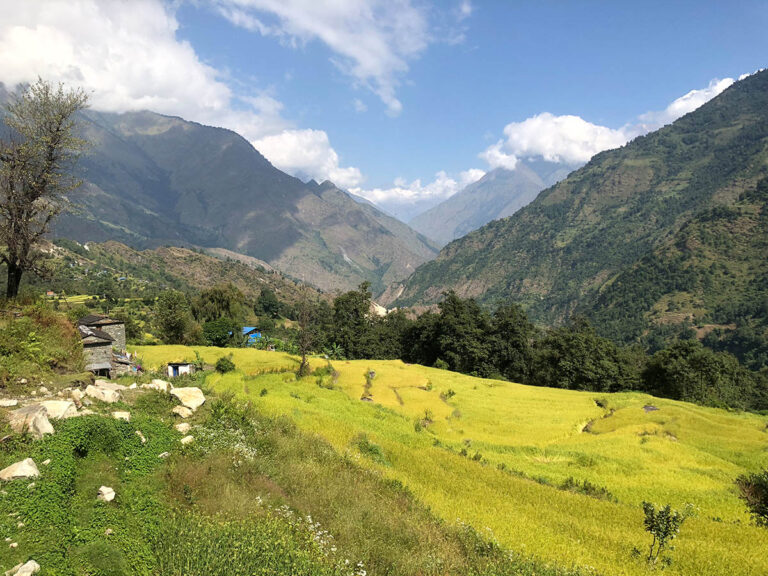Ghandruk is a beautiful village located in southern belt of the Annapurna mountain ranges and northern part of Pokhara city. Trek into the Ghandruk village purpose to discover dozens of villages, picturesque places and commands to see astonishing views of high Himalayas, green forest, landscapes and awesome River valleys.
The Ghandruk trek is one of the easiest trekking route of Annapurna region because most of villages are settled lower than 2500 meters and purpose to see closer views of snow-capped peaks known as Annapurna south 7219m, Hiuchuli 6441m, Machhapuchhre 6997m, Mardi Himal 5553m, Annapurna II 7937m, Baraha shikhar 7647m, Annapurna IV 7525m, Annapurna III 7555m, Gangapurna 7454m, Gandharba peak 6248m and including some of the top ten mountains of the world called Annapurna I 8091m, Manaslu 8163m and Dhaulagiri 8167 meters high above the sea level.
Apart from high Himalayan view the Ghandruk trekking trail commands to discover dozens of villages, which are settled over the vertical land and inhabitant by the Gurungs, Magars, Dalits, Chhetris and Brahmans. The Chhetris and Brahman peoples are known as high castes and Hindu peoples of Nepal and mostly settled lower regions. The Gurung and Magar peoples are main ethnic groups of the area and practicing Buddhism and shamanism so along the trekking trail trekkers will explore some small monasteries, Stupa, Chhortens and Mani walls.
The region is also very reach for the flora and fauna so during the trekking period; trekkers will walk through the dense forest of Rhododendron, Chestnuts, Sandalwood, Bamboo, walnuts, Daphne and pines. The forest is habitats of monkeys, Tiger, mussels, deer, Langurs (white body and black faced monkey) Bear, Ghoral and many specie of birds and butterflies. If trekkers are traveling during the spring season then possible to see many kinds of blossoms such as Rhododendron, wild Rose, orchids and magnolia.
Honey hunting festival – Gurung people celebrates a unique festival called Honey hunting festival during the April-May and October-November. It is an age-old tradition among the people of Ghale goun and Ghanapokhara village. The Honey hunters perform exceptional skills as they hang the rope on a vertical cliff and chuck the wild honeycombs to get honey.The honey is used as medicine and price is very high in the international market.
Gurung peoples – Gurungs peoples are a Tibeto-Burmese peoples(who called themselves Tamu or highlanders) originally migrated from western Tibet to central region of Nepal around 6th century and now; they living throughout the Nepal especially Gorkha, Tanahu, Baglung and Sangkhuwa sabha district of Nepal. The Gurung peoples are known as Buddhist people but still some of the family practicing Bon faith and shamanism too. Gurung people has their own language, culture , tradition, religious rituals and festivals.Their main festival is called Lhosar which is dedicated to Tibetan new year. Apart of Lhosar festival they celebrates Rodhi (One distinctive aspect of village life is the Rodhi, a cross between a town hall and a youth center,where teenagers hang out and cooperative village task are planed.






